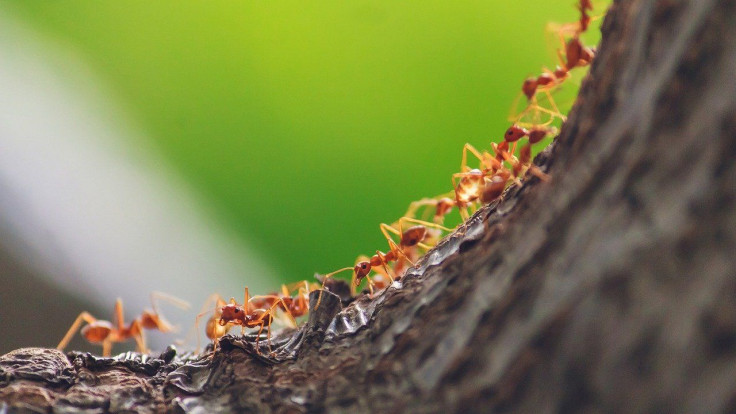Ants Sharpen Their Teeth With Zinc For Stinging Bites: Study
KEY POINTS
- Researchers had a closer look at the "tools" of creatures like ants and scorpions
- They recorded the distribution of zinc atoms in ant teeth for the first time
- They found that zinc atoms embedded in ants' teeth help make them so sharp
Ant bites can really pack a punch, but what's the reason behind their stinging bite? A team of researchers has shed light on how these insects' "tools" can easily puncture and slice surfaces.
Anyone who's ever bitten by an ant would know how bad the puncture of their mandibular teeth hurts. These structures are attached outside of the creatures' mouths and are made of material that binds individual atoms of zinc, the U.S. Department of Energy's Pacific Northwest National Laboratory (PNNL) said in a news release.
And in a new study, published in Scientific Reports Wednesday, a team of researchers found just what helps ants and other tiny creatures puncture and slice with "relative ease."
For their study, researchers from PNNE and the University of Oregon measured the hardness, elasticity and, "for the first time, loss tangent, energy of fracture, abrasion resistance, and impact resistance of zinc- and manganese-enriched materials" in ant, spider, nereid worm and scorpion tools such as claws, teeth and stings.
To do this, they utilized atom probe tomography to have a closer look at how the individual atoms are arranged at the tip of the creatures' tools and found rather interesting results.
In case you were curious, this is how we make APT needles of ant teeth. It mills nicely and runs nicely in atom probe tomography giving datasets as big as 100 million ions! @PNNLab pic.twitter.com/KRav1R87QH
— arun devaraj (@Drarundevaraj) September 1, 2021
"We could see that the zinc is uniformly distributed in the tooth, which was a surprise," Arun Devaraj, study co-author and materials scientist at PNNL, said as per the PNNL news release. "We were expecting the zinc to be clustered in nano-nodules."
In a video released alongside the study, one can see just how efficiently these creatures bite and slice, as well as the zinc atom composition of their specialized tools.
"This homogeneity appears to enable sharper, more precisely sculpted "tools" than materials with biomineral inclusions do, and also eliminates interfaces with the inclusions that could be susceptible to fracture," the researchers wrote.
Why do ant bites sting? 🐜
— Pacific Northwest National Laboratory (@PNNLab) September 1, 2021
Their teeth pack a powerful bite thanks to embedded zinc atoms. PNNL scientist @Drarundevaraj recently recorded the distribution of zinc in ant teeth by using a specialized microscopic technique. 🔬 https://t.co/AuqTIhOnWz
"We suggest that the sharpness-related force reductions lead to significant energy savings, and can also enable organisms, especially smaller ones, to puncture, cut, and grasp objects that would not be accessible with plain or biomineralized 'tools,'" the researchers added.
As PNNL explained, the researchers estimated that the sharper tools enable the creatures to use just 60% or less of the force they would need if their tools were made of the same ones in human teeth. Simply put, zinc atoms in ants' teeth are arranged for "maximum cutting efficiency," allowing them to use less energy.
"These advantages may explain why every spider, ant, other insects, worms, crustaceans, and many other groups of organisms have these specialized tools," PNNL said.

© Copyright IBTimes 2025. All rights reserved.






















